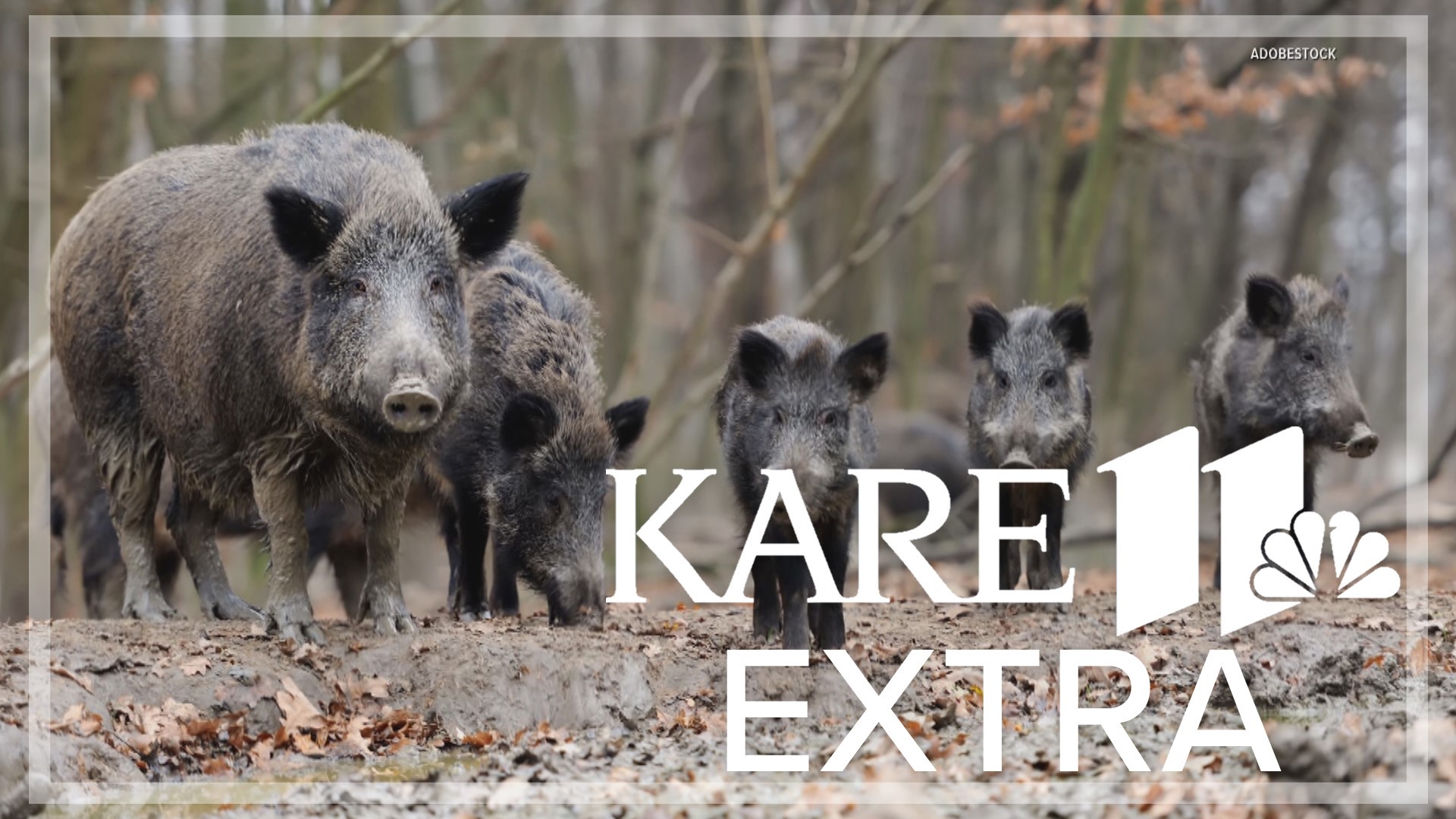MINNESOTA, USA — Wild pigs, capable of destroying habitat, uprooting crops and carrying the threat of disease to livestock, have established a small population 85 miles north of the Minnesota border, according to Canadian wildlife officials.
“This is the worst invasive large mammal on the planet,” says Ryan Brook, a professor of agriculture and bioresources at the University of Saskatchewan. “They reproduce so fast that you just can't barbecue your way out of a wild pig problem.”
Brook says feral swine is out of control in Canada with each province doing its best to slow population growth. His survey, published in Scientific Reports in 2019, shows the exponential growth of wild hogs over the last 30 years, now covering more than 380,000 square miles.
Squeal on Pigs is Manitoba's 911 service for wild pig removal, funded mostly by the pork industry.
Coordinator Wayne Lees says they use 80 trail cameras, public sightings and traps to catch wild hogs. Other provinces will use helicopters to cast a net on whole sounders from the air.
SOP’s latest map shows a population, potentially in the hundreds, established less than 40 miles from the Minnesota border, according Lees.
The problem was self-made.
Brook says Eurasian wild boars were brought to Canada from the United Kingdom in the 1980s and 90s for farming and hunting. After 2001, the market for these pigs collapsed, and many frustrated farmers cut their fences and let them go, according to Brook.
“The potential for Canadian wild pigs to move into Montana, North Dakota and Minnesota, these are very real risks that could happen at any point now,” said Brook.
Eric Nelson, wildlife damage program supervisor with the Minnesota Department of Natural Resources says Minnesota doesn't have a wild pig problem, yet.
The DNR, in cooperation with the Board of Animal Health and local law enforcement, will respond to 12 to 14 loose domestic pig calls per year, which can become feral and repopulate in the wild if not caught quickly, Nelson said.
“It's very hard to get rid of them,” said Nelson. “We tell people don't shoot, report, because we have trained people that can actually get rid of these pigs versus scaring them and educating them to run off.”
Minnesota bans hunting feral swine without special approval from the DNR. It’s one of the concerns some in the public have expressed to the DNR, according to a new report by the DNR for the state legislature.
In other states, like Texas, wild pigs can be hunted or trapped by any means with permission from a landowner year-round, with no bag limit, according to Texas Parks and Wildlife.
“These are our state animal,” jokes Rylee Horton, a hunting guide and owner of Tejas Outfitting. “Wild hogs that have made their way to Texas, and we are doing everything we can to keep them out.”
Business is abundant for many guides like Horton, because wild hogs are everywhere, an estimated three million in Texas alone.
They are found in 35 U.S. states causing $2.5 billion dollars in damages annually, according to the USDA.
“If you can hold a gun or drive a truck, people are hunting them,” said Horton.
Wildlife biologist Rick Taylor wrote the book on feral swine in Texas. He says they are both hated by many farmers for their damage but celebrated in different parts of the state as a cultural food delicacy. Taylor says the biggest problems with wild hogs are they have no natural predators and reproduce too quickly to eradicate.
“If a sow has one litter, and they are capable of breeding at nine months, by the end of that year that single sow is already a grandmother because her kids have had kids already,” said Taylor.
You don’t have to travel far outside Waco to see field damage caused by pigs.
“One night they can take two, three, or four acres down without any problem, and it's ruined,” said Larry Wornat, who operates a beef cattle feeding operation on 1,300 acres outside Waco.
He relies on an iPhone-triggered, remote trap with night vision to try and reduce the population of pigs that eat his feed and till his fields.
Wild pigs are not in Minnesota yet, but by all accounts, it's a threat to be taken seriously.
“Get ready for a prevention plan, because they will flat take over,” said Wornat.
Watch more KARE 11 Investigates:
Watch all of the latest stories from our award-winning investigative team in our special YouTube playlist:

